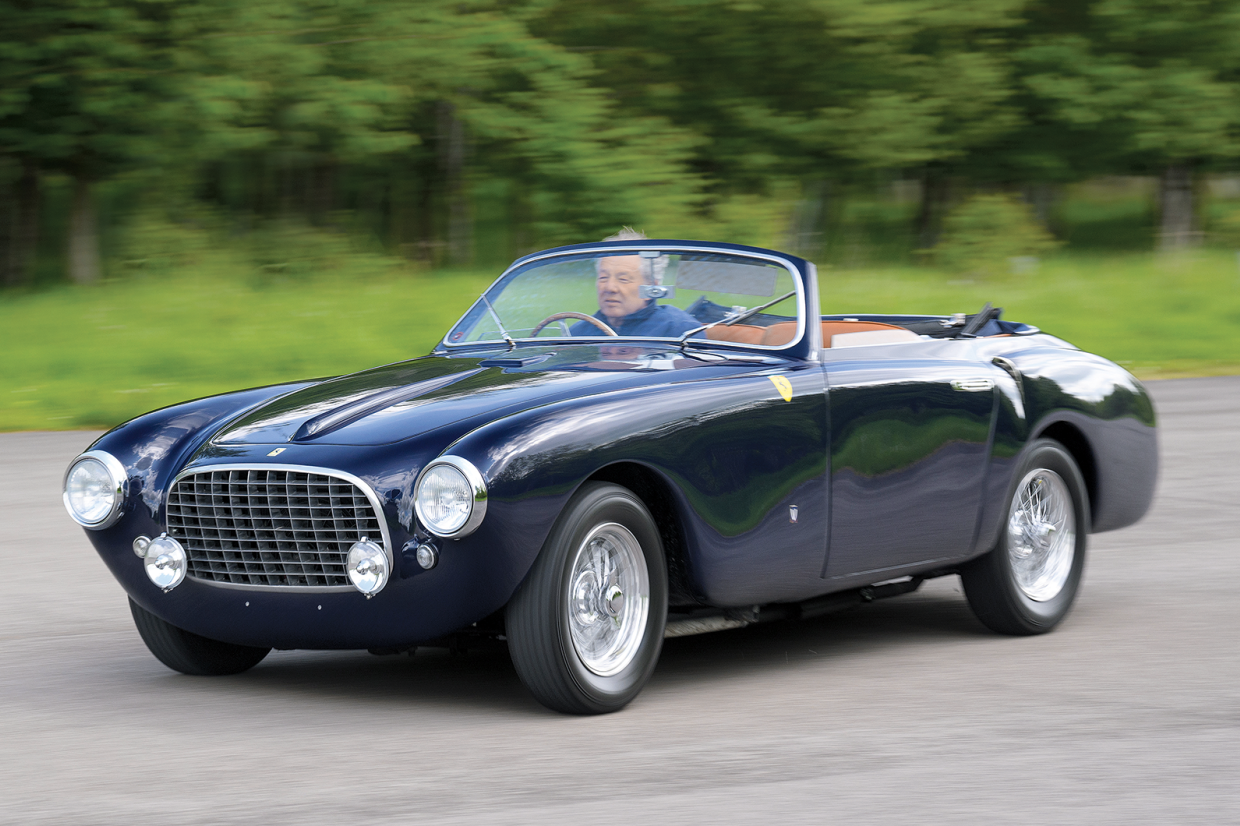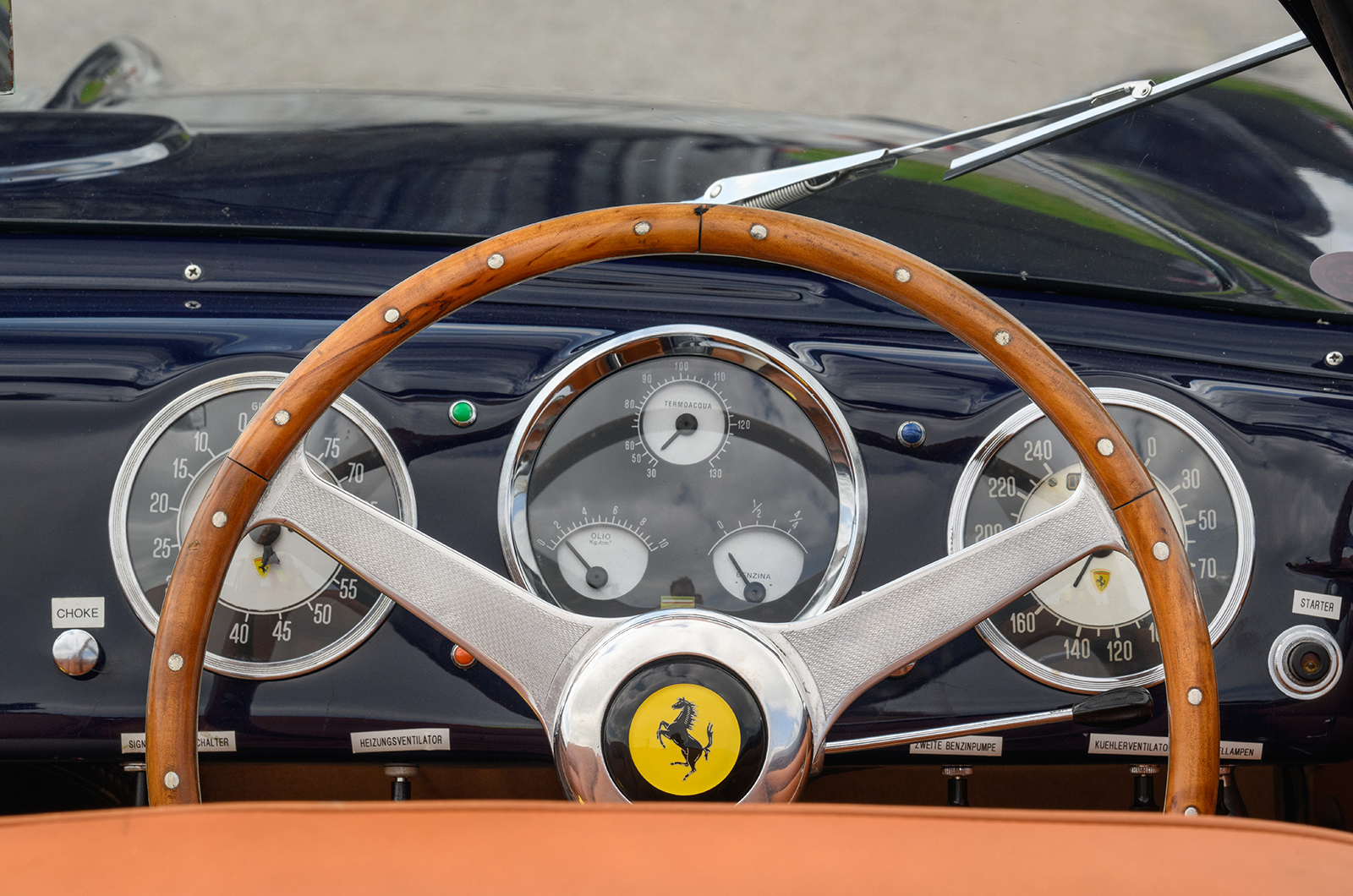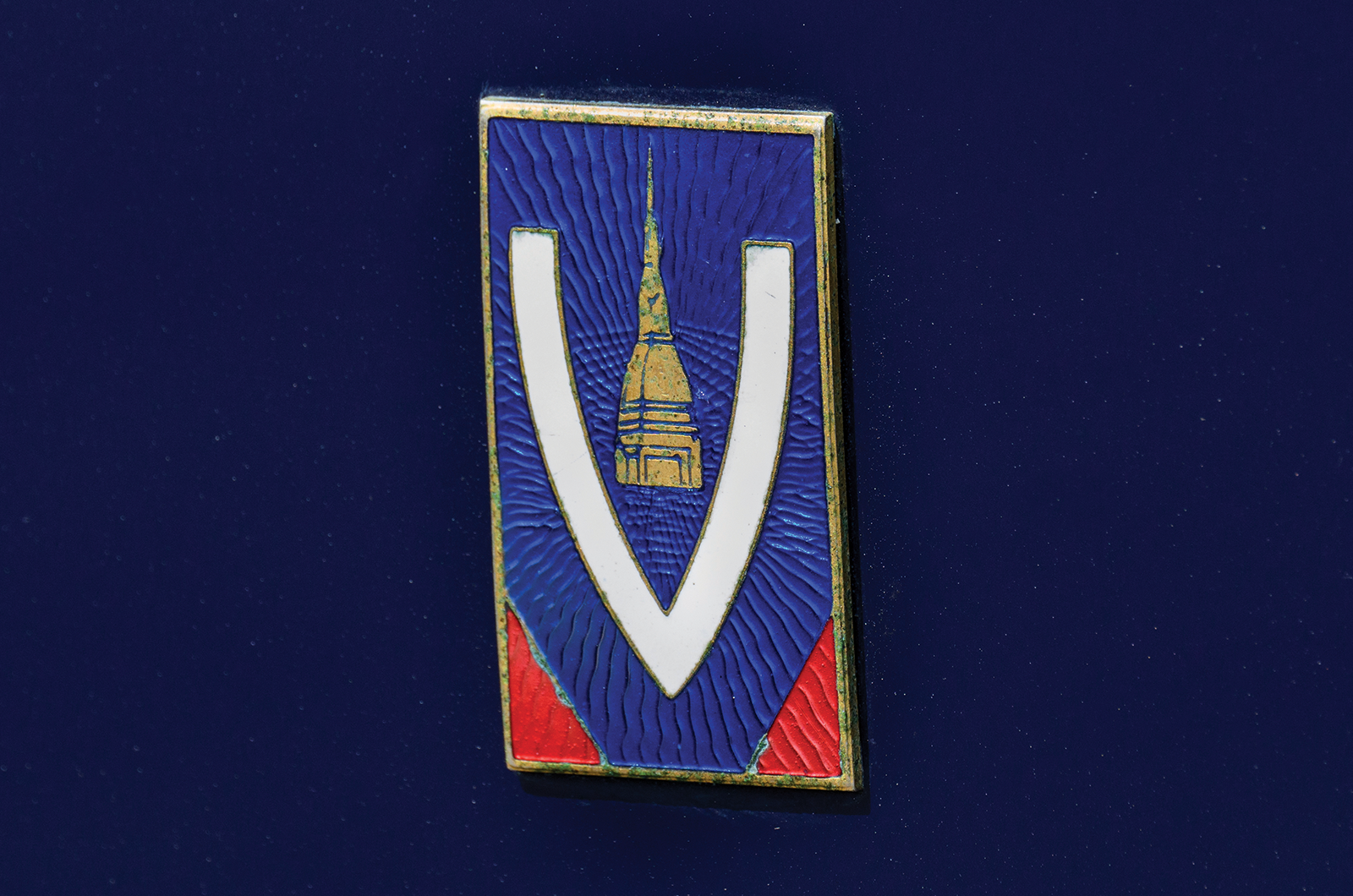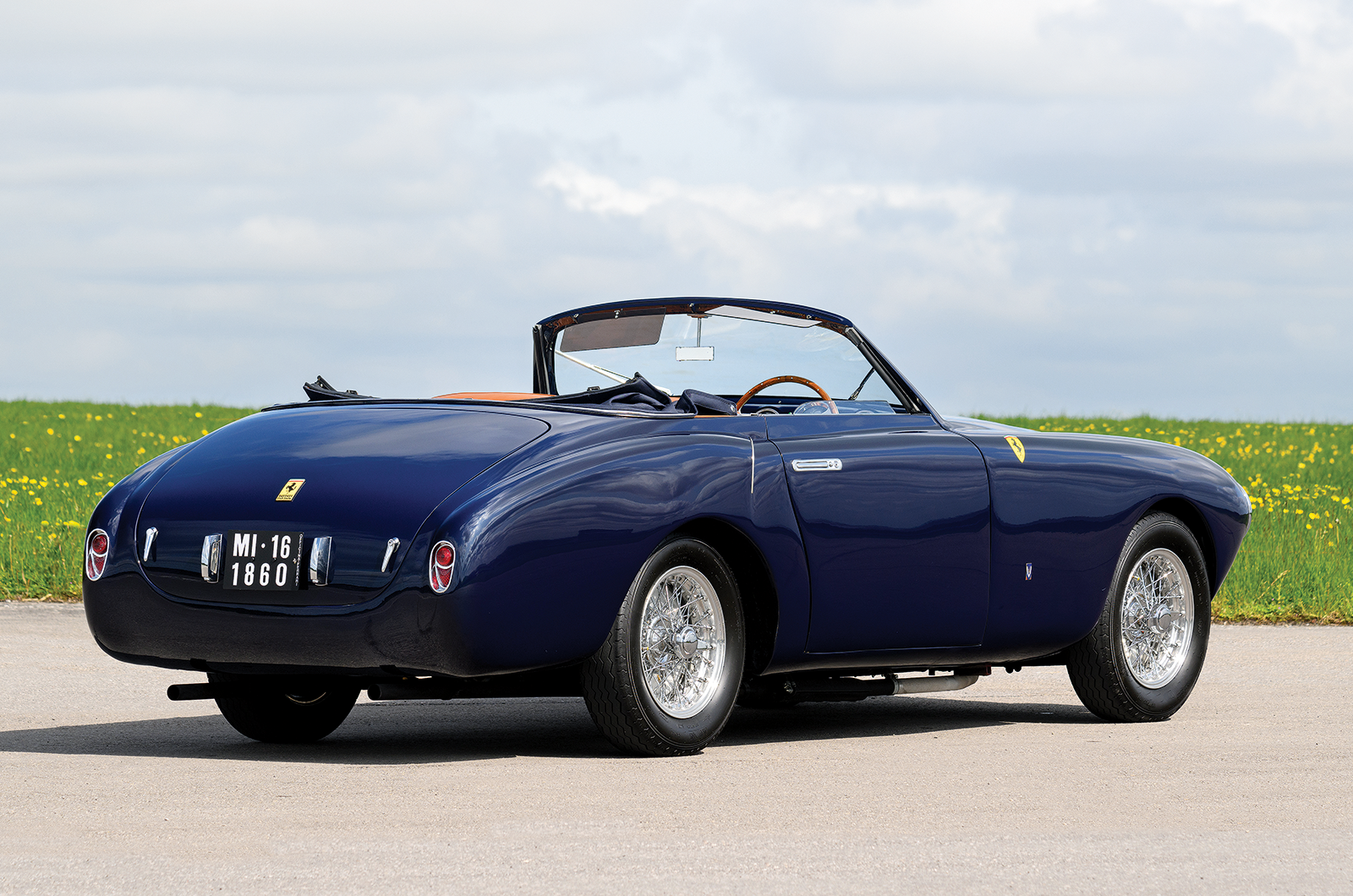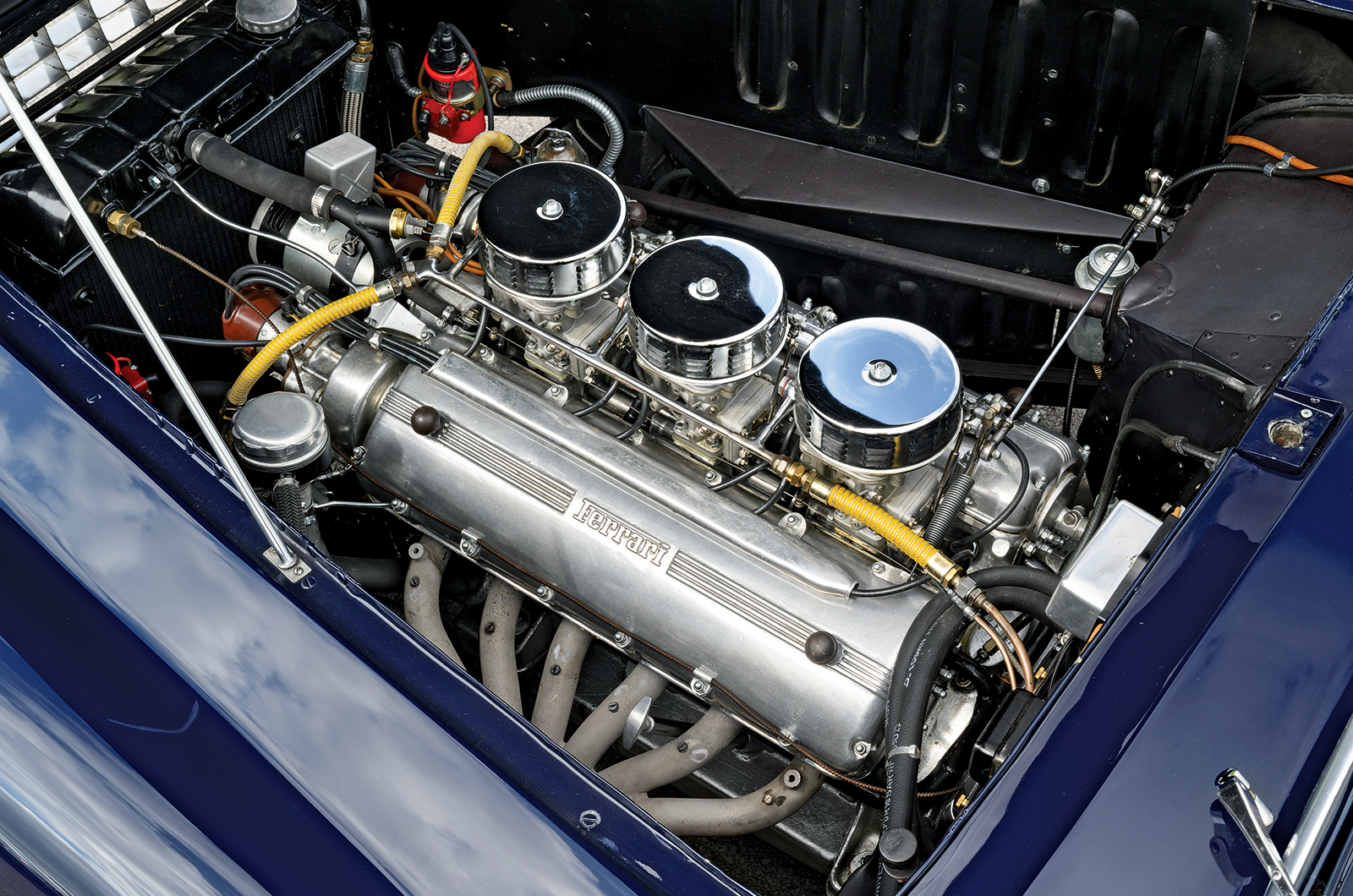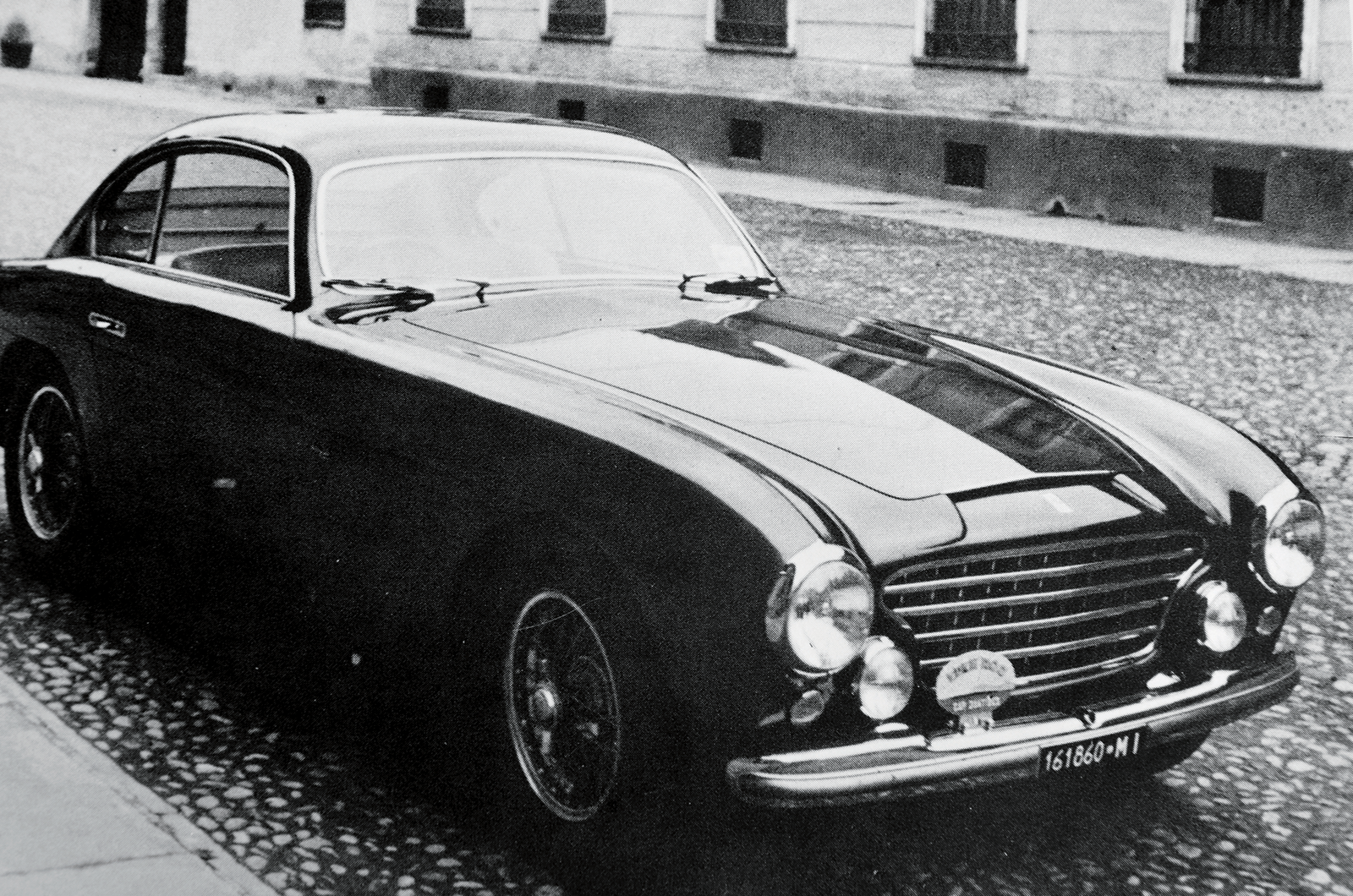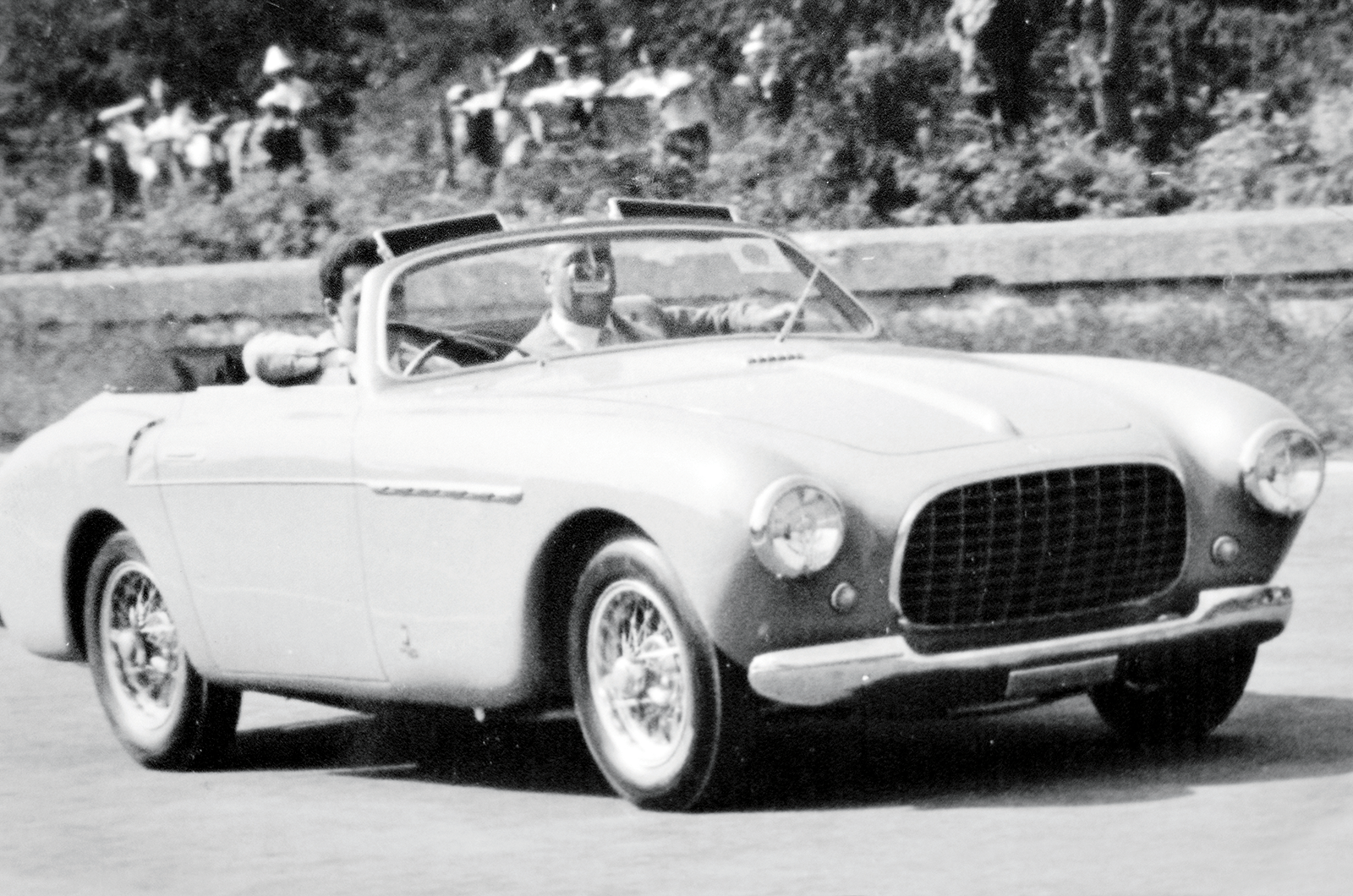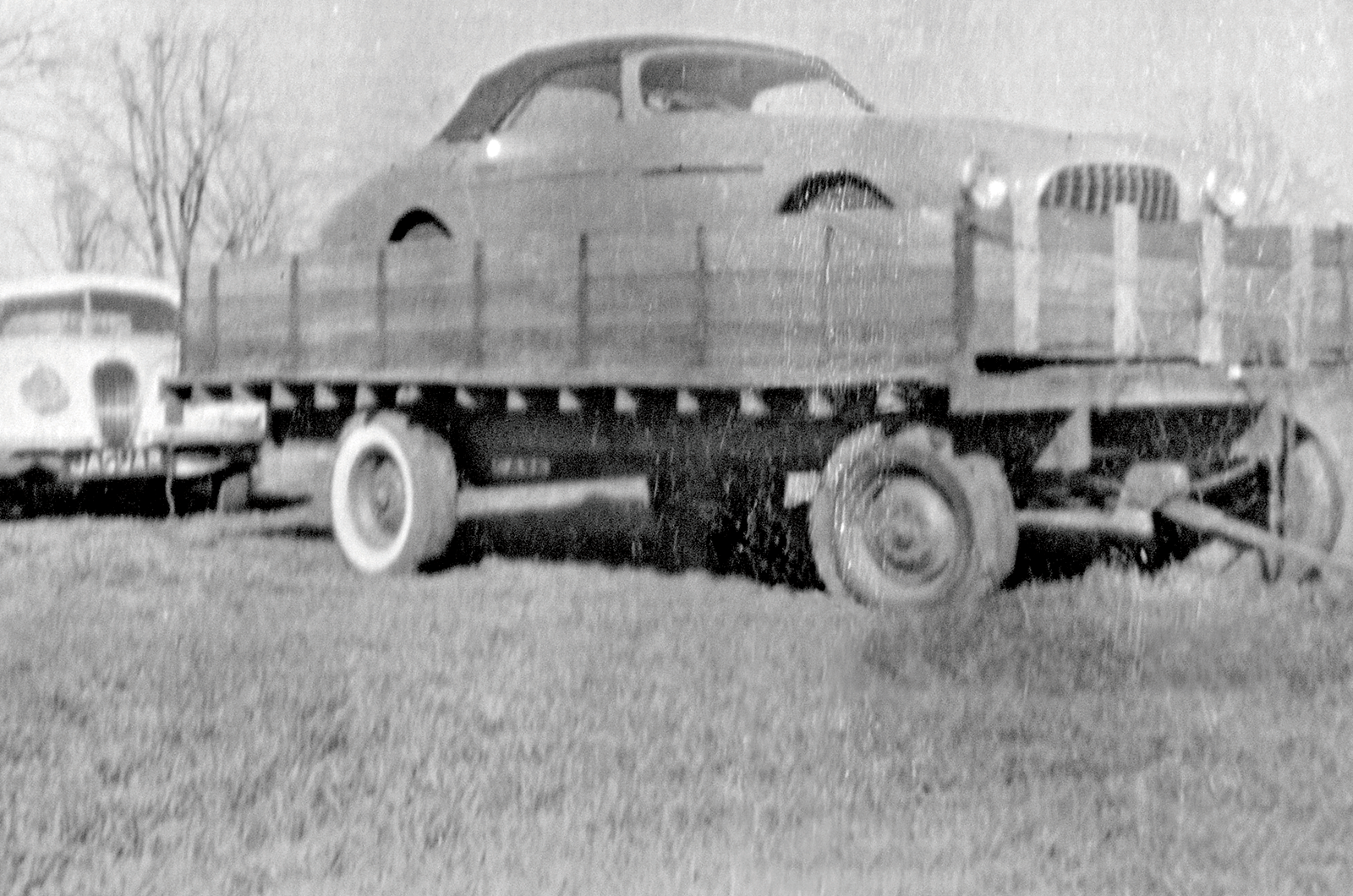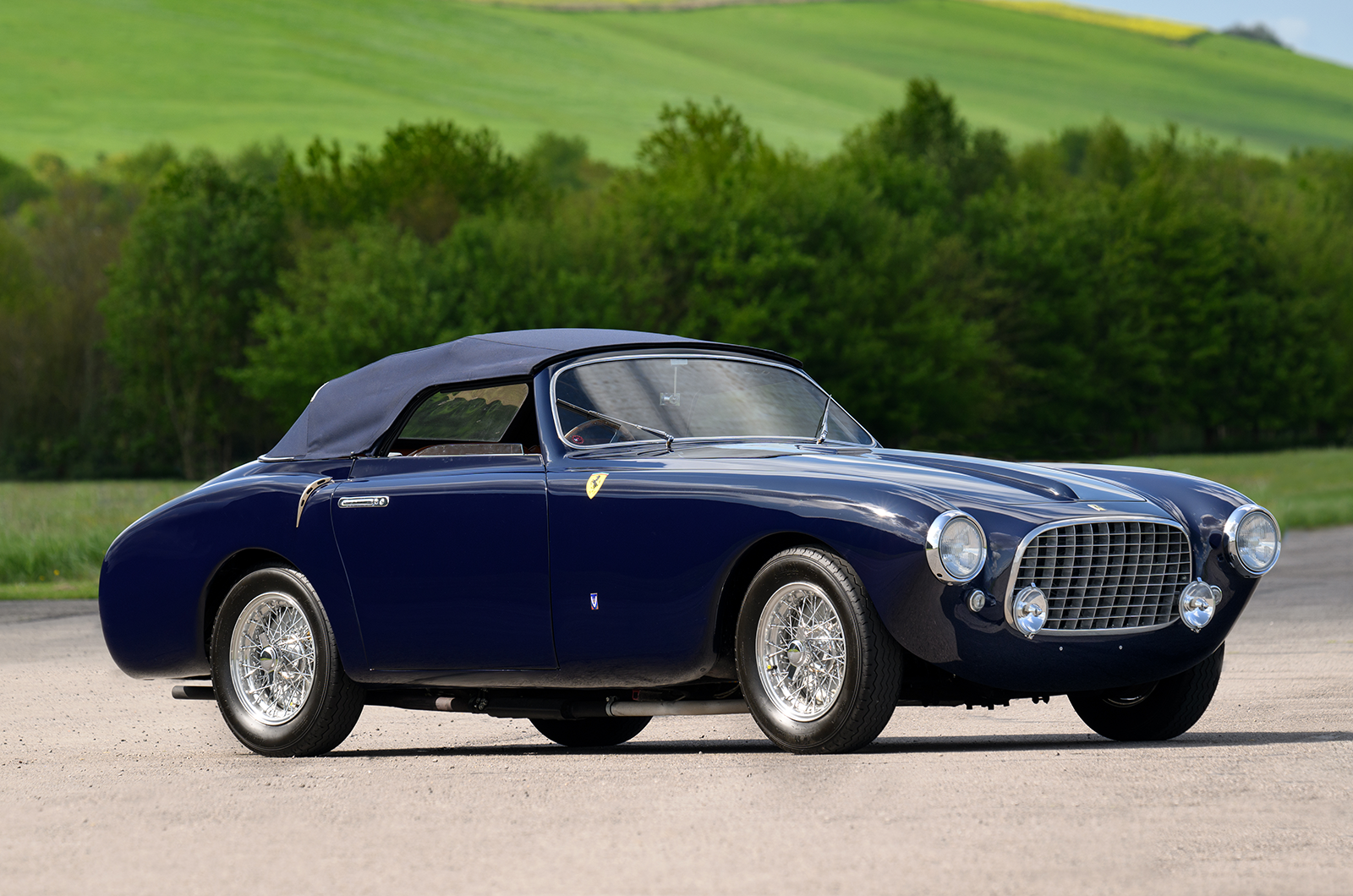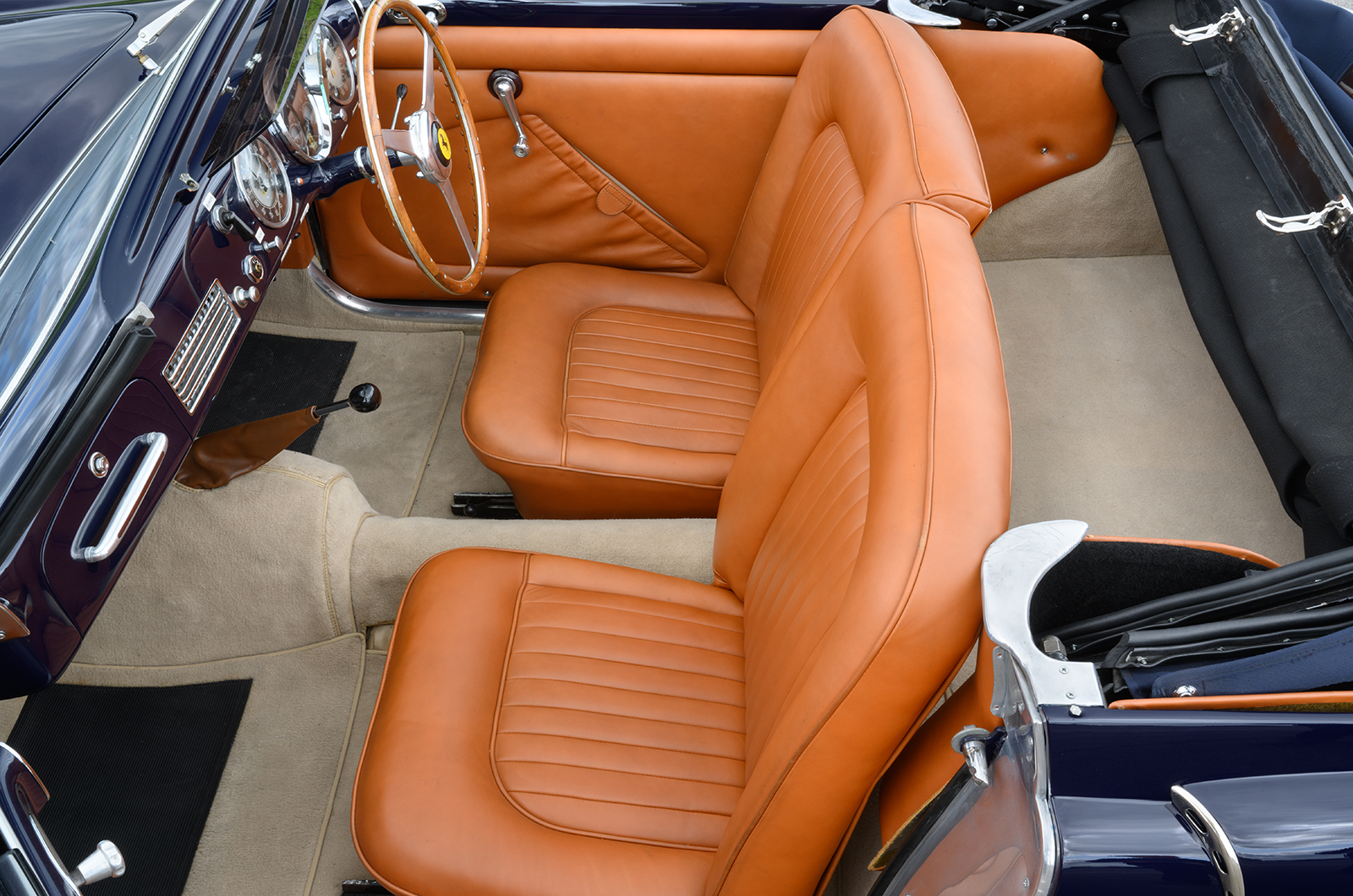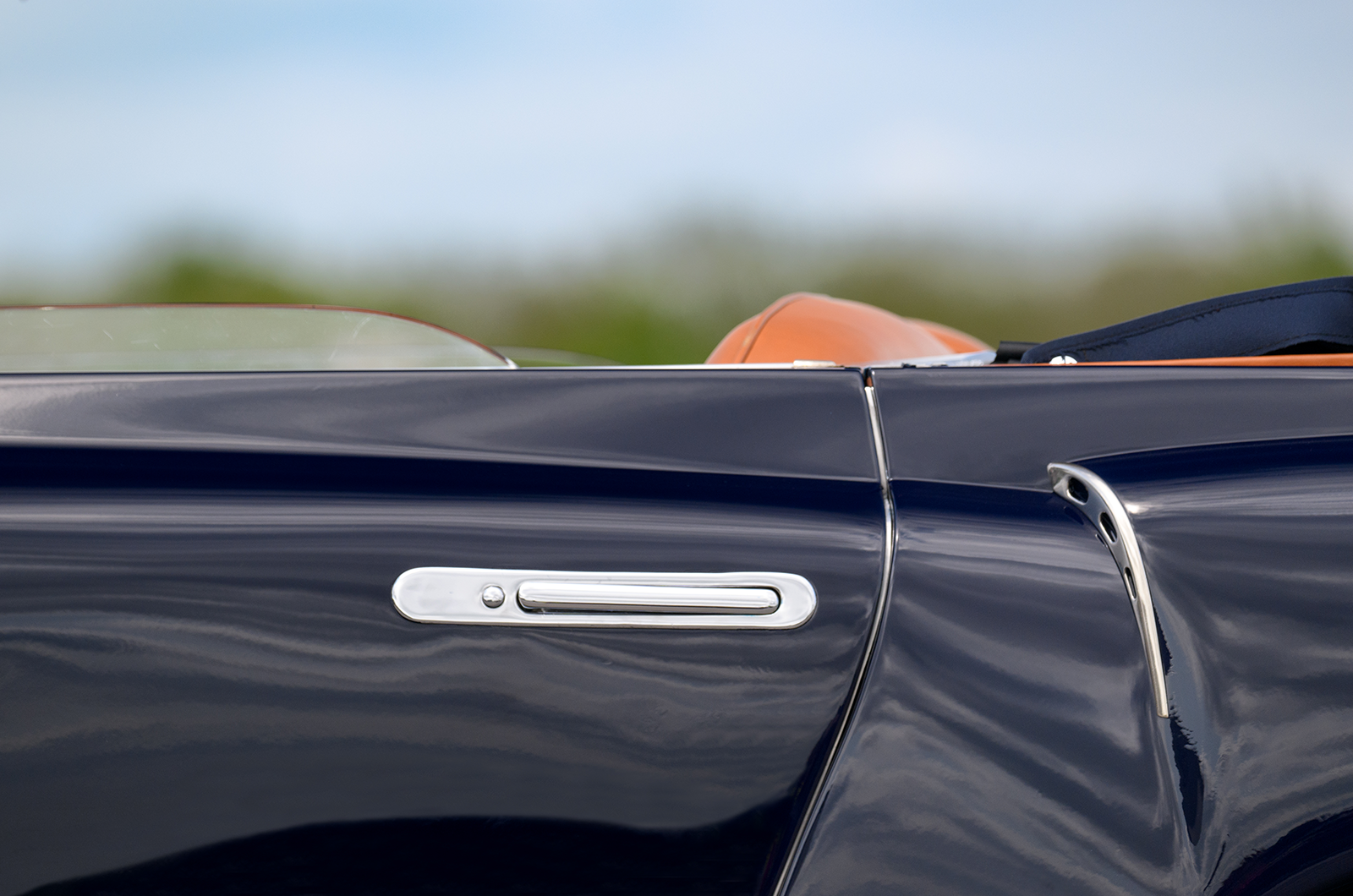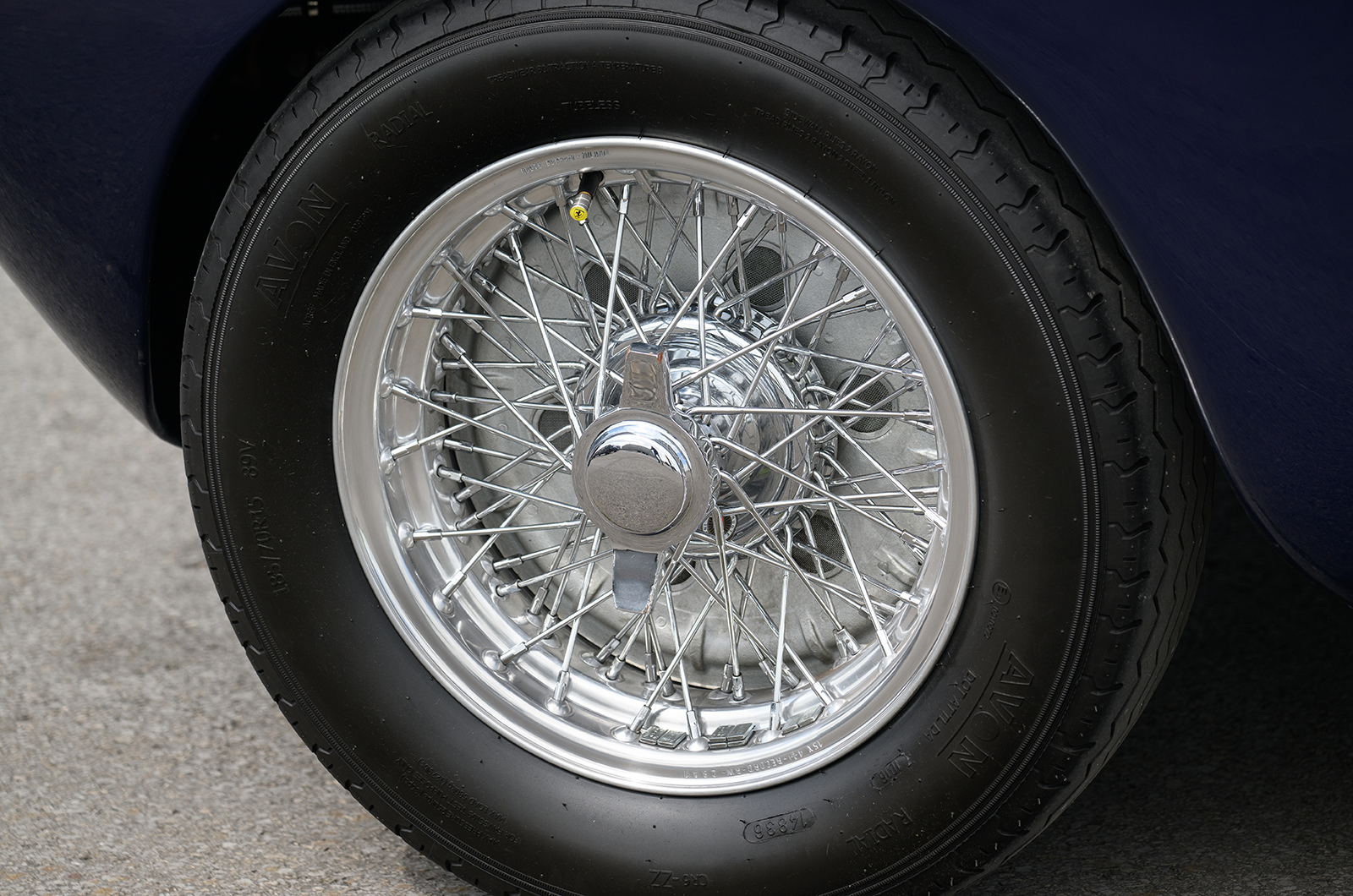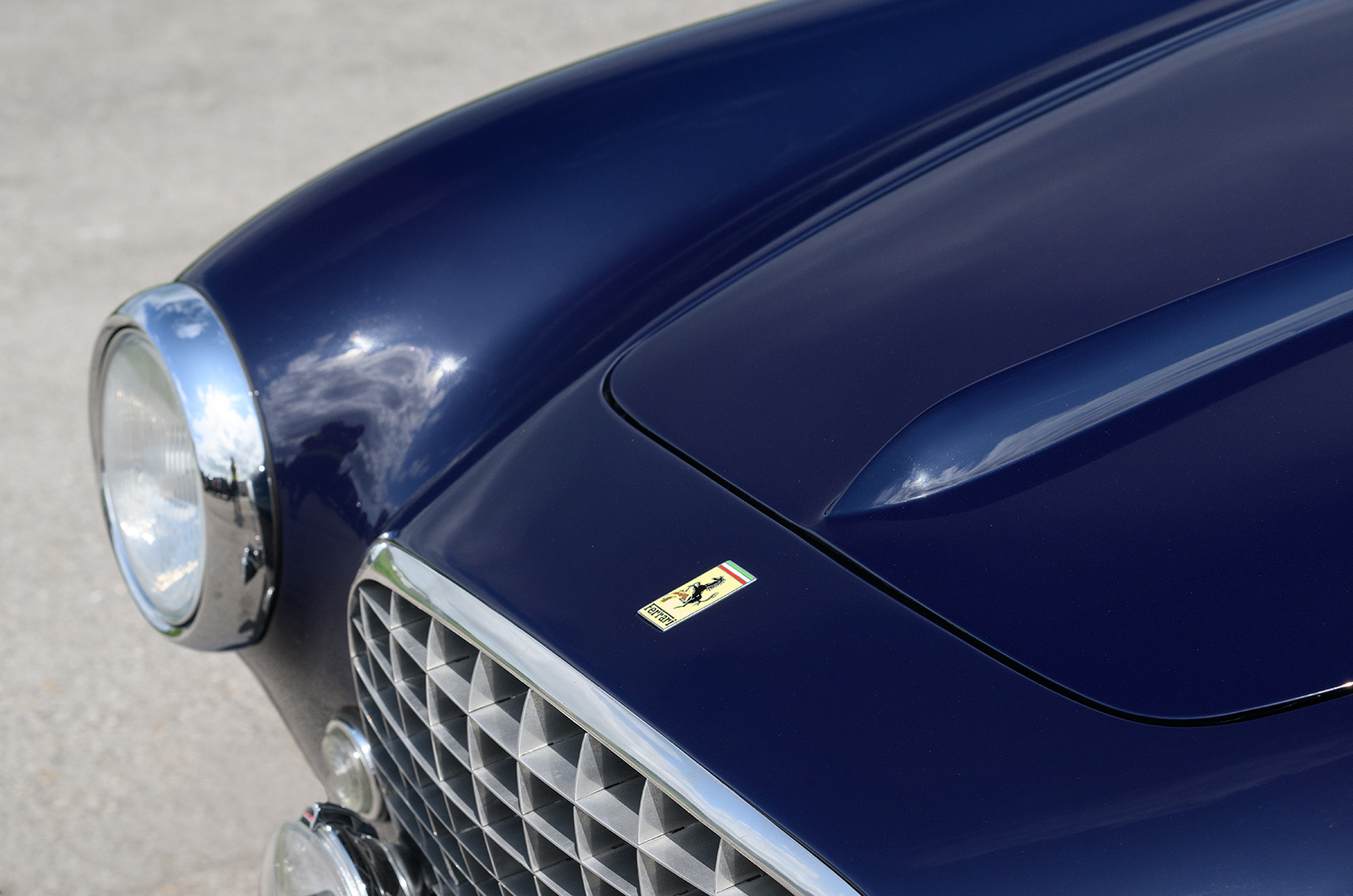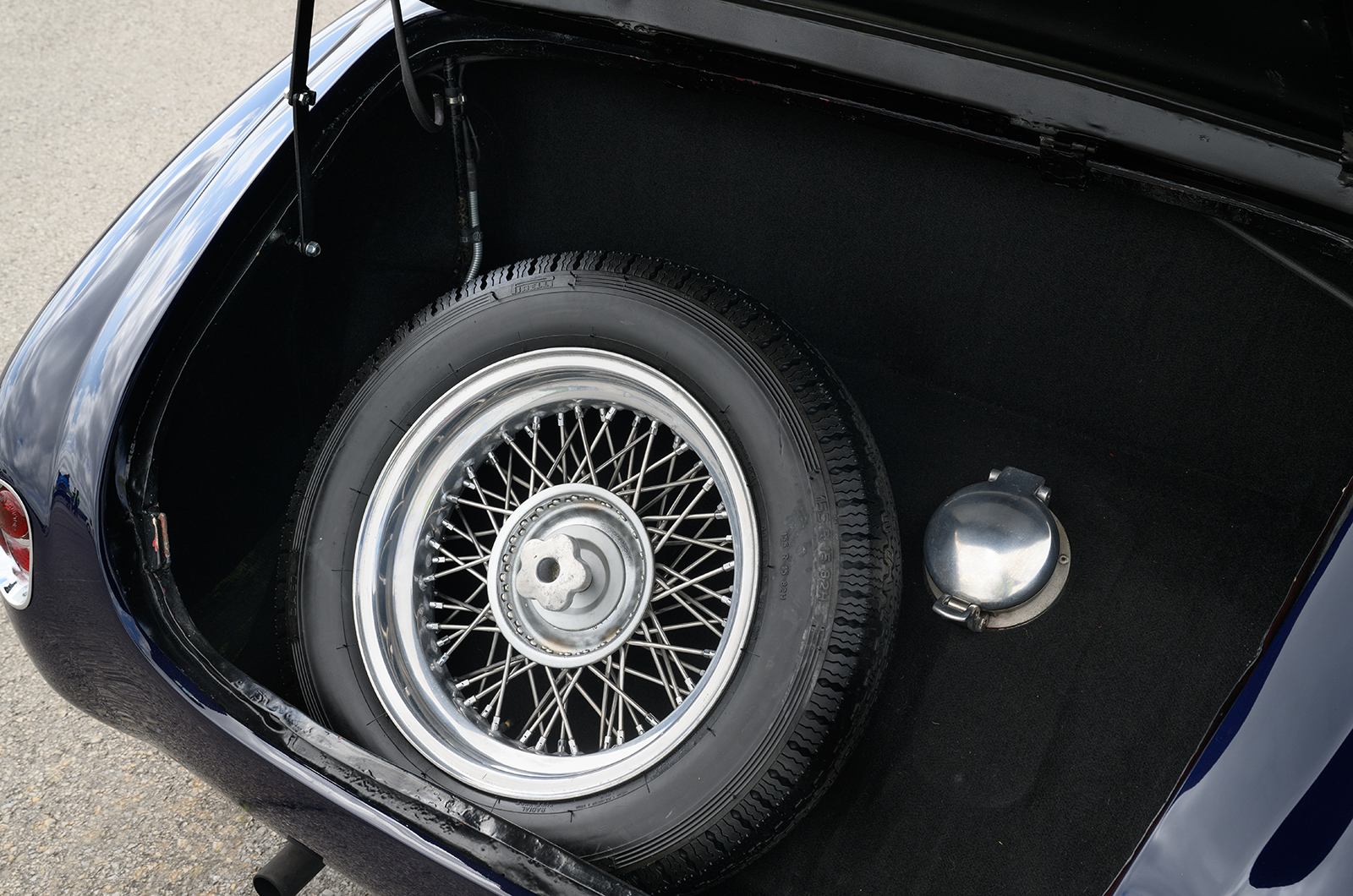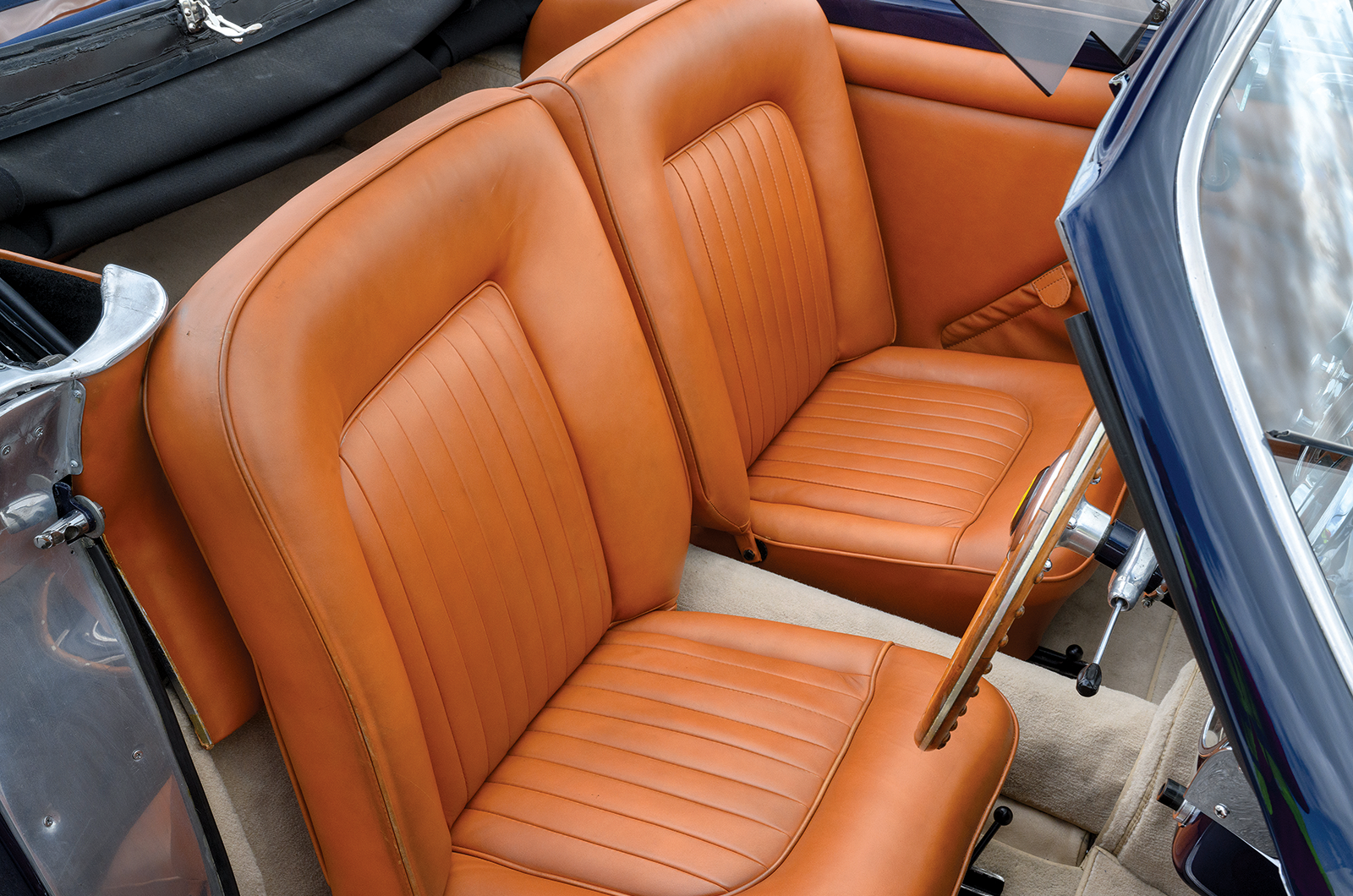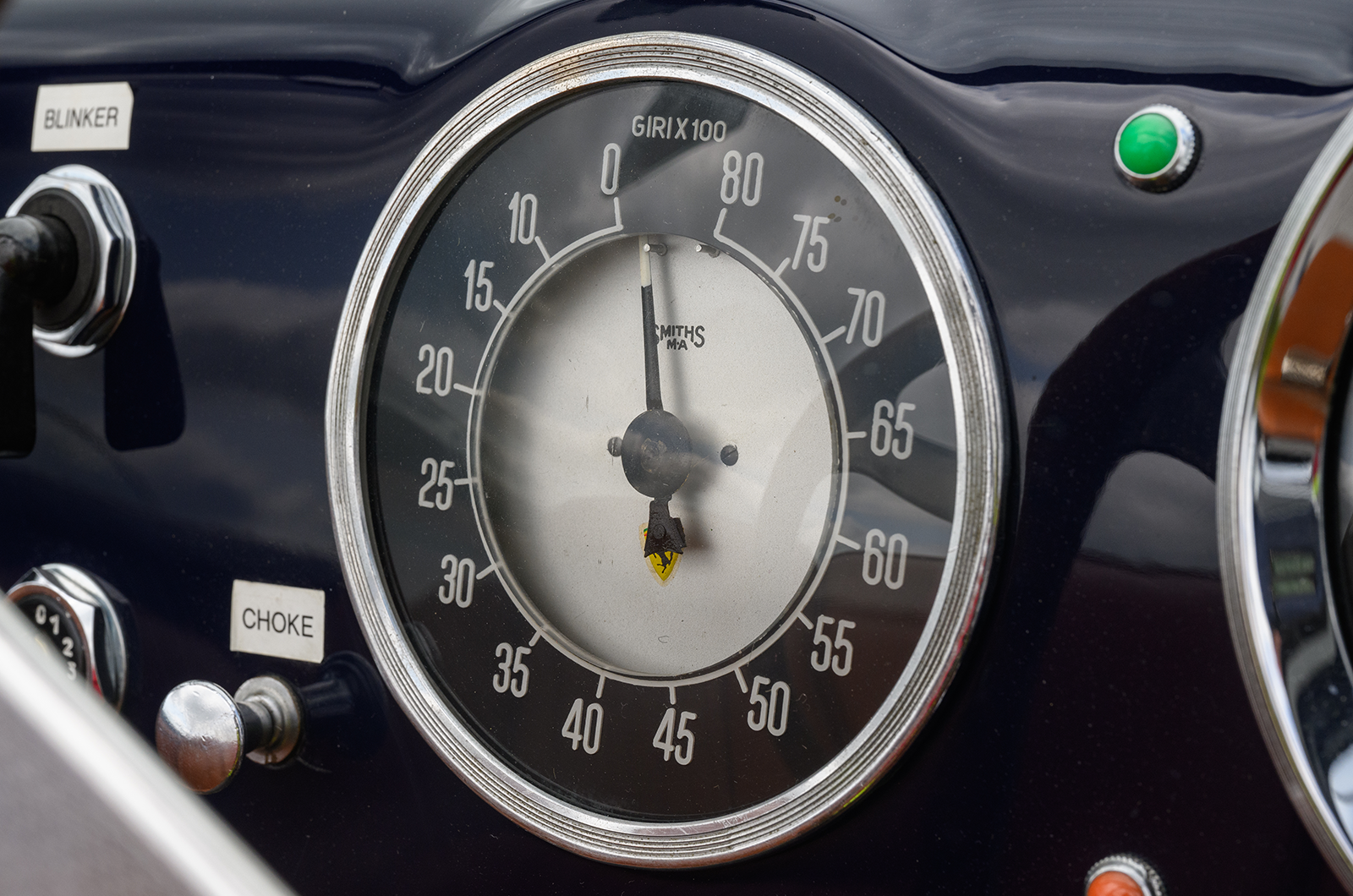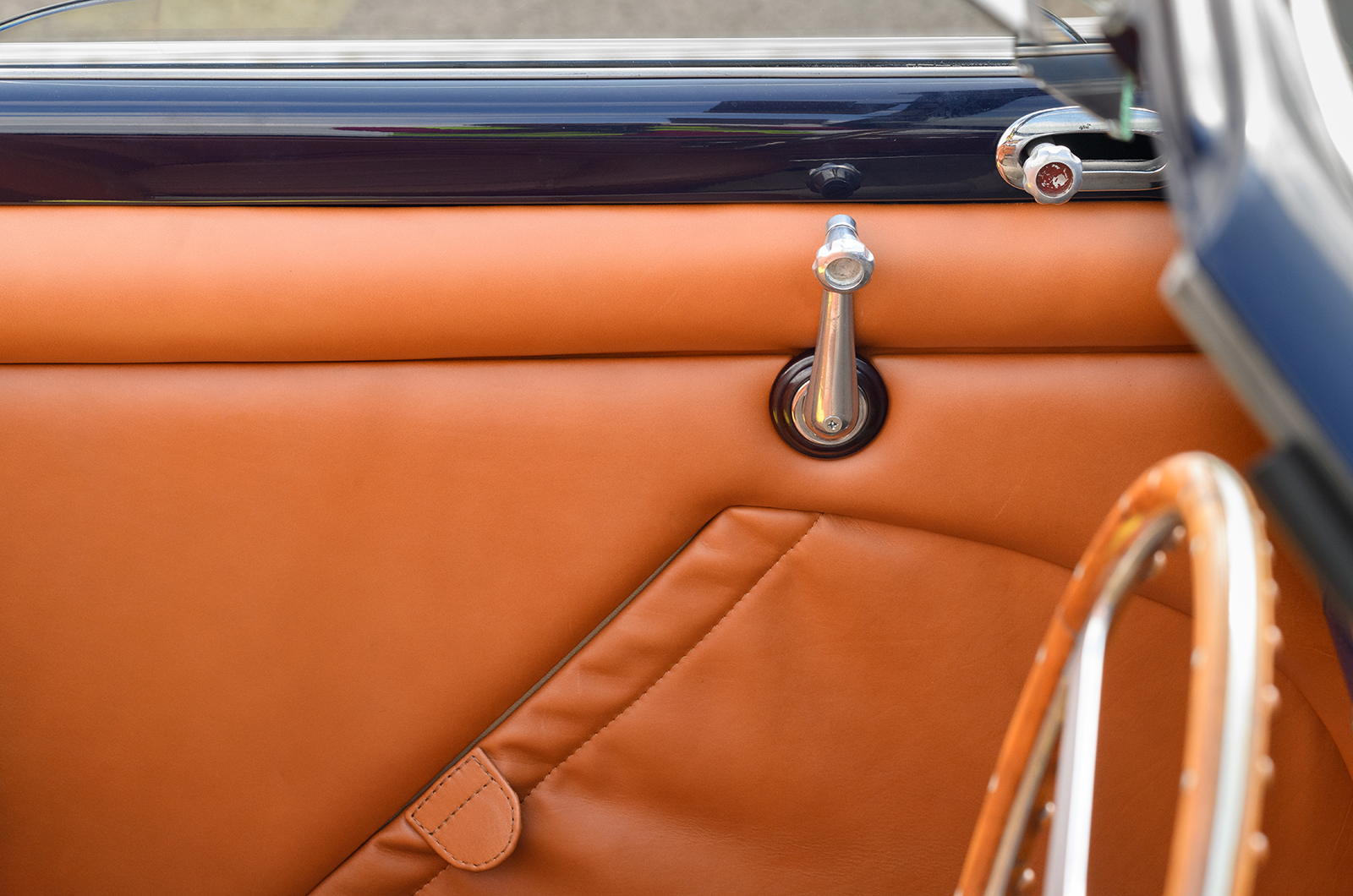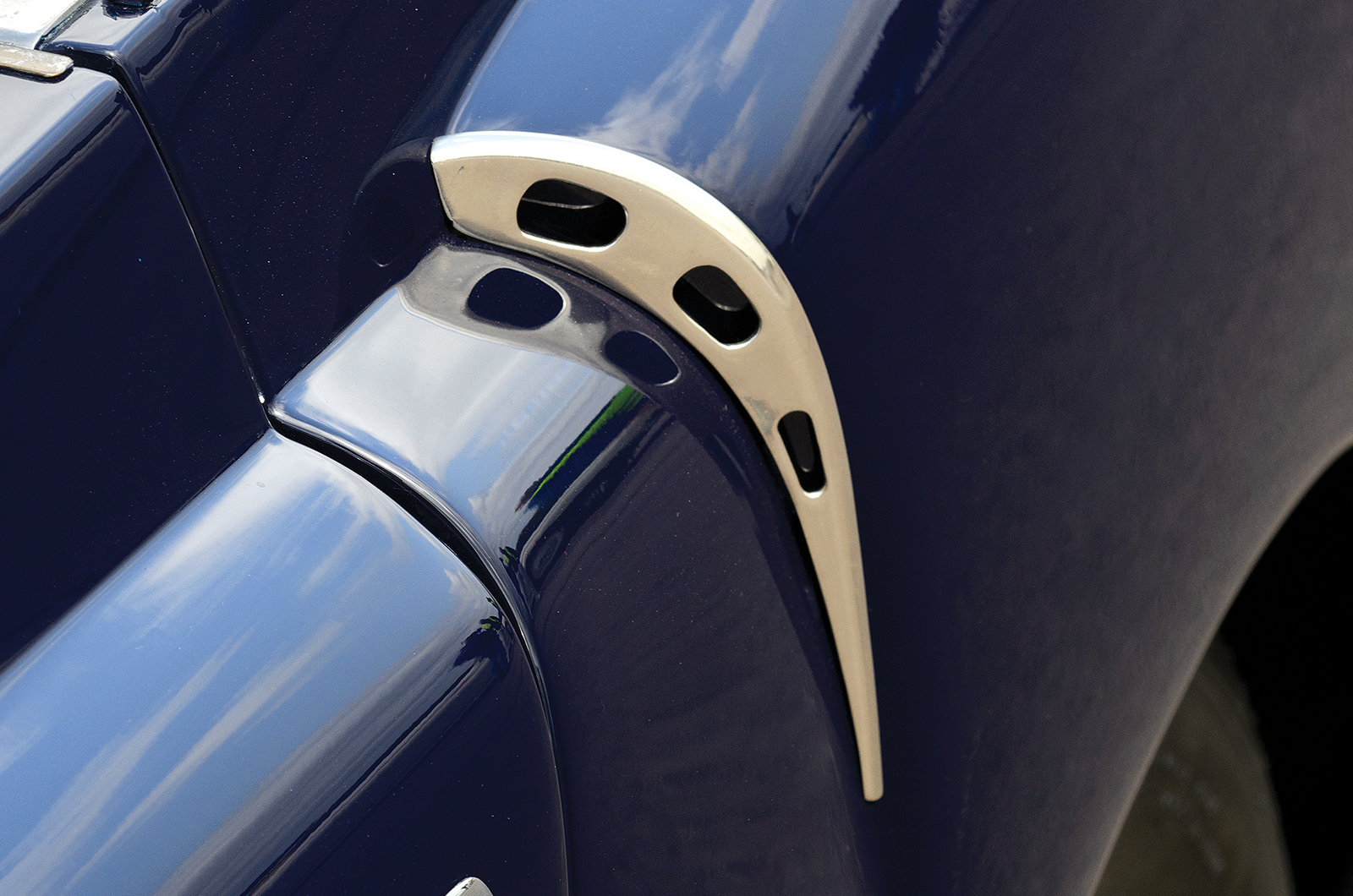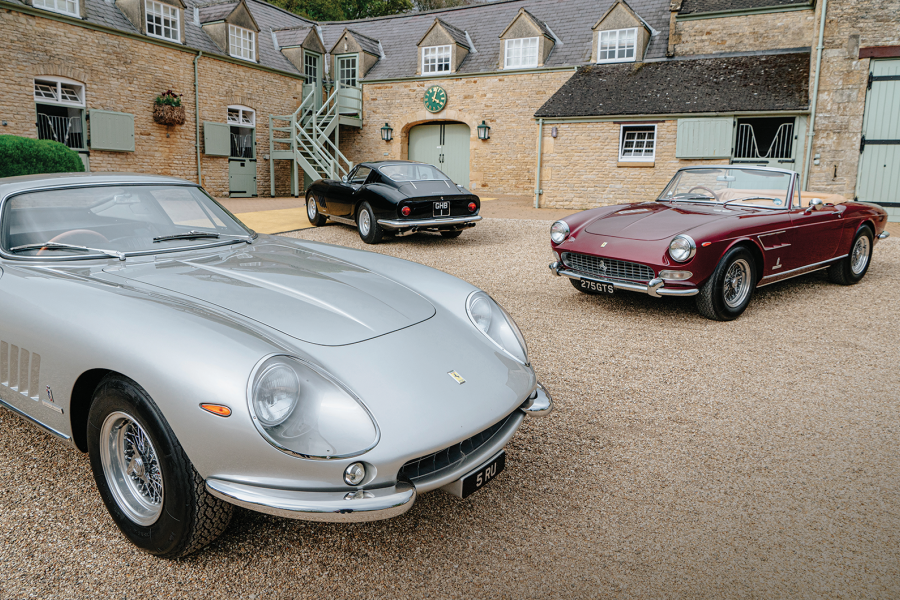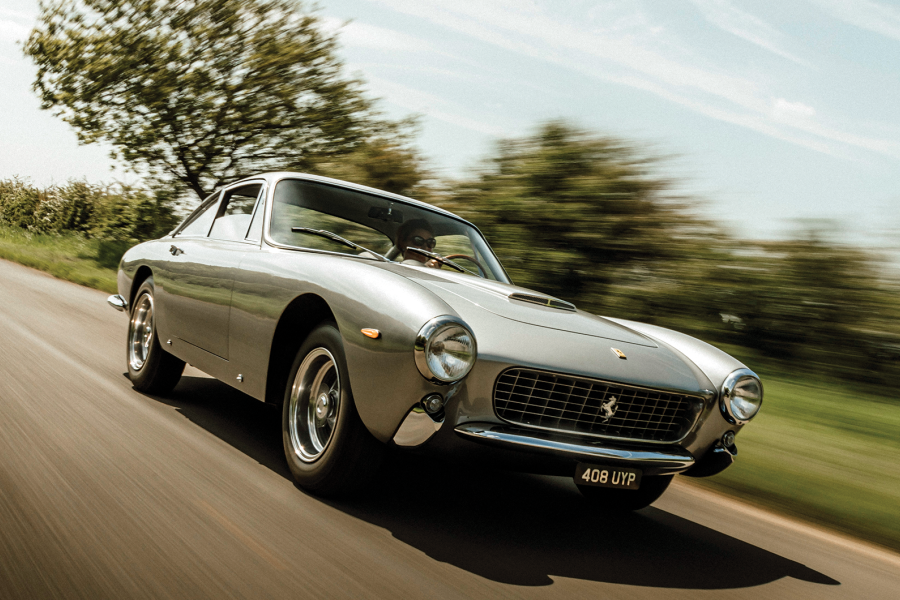Pop the front-hinged bonnet and you find the early, Gioacchino Colombo-designed Ferrari engine, a 60° V12 with wet liners and a counterbalanced crank.
Its elegance, symmetry and proud finish are in stark contrast to the crude ironmongery of the car’s general underpinnings.
With its hairpin valve springs, triple 36DCF Webers and twin horizontally mounted distributors, this short-stroke masterpiece of Silumin casting sits low in the roomy engine bay.
The fuel tank, with internal filler cap, takes up a lot of boot space
Like almost all early Ferraris, 0051S is right-hand drive, the reasoning being that it suited clockwise-running European circuits and was the safest vantage point on narrow Alpine roads.
The large, three-spoke Nardi wheel, with its riveted wooden rim, frames a glitzy triple-dial layout with a large oil pressure, fuel level and water temperature combination gauge flanked by a slighter smaller rev counter (reading to 10,000rpm) and speedo (to 240kph).
Someone has run amok with the Dymo-tape machine, naming the various widely scattered controls for lights, wipers and indicators.
‘A metallic whine brings the V12 to life, with a sound that has been breaking hearts and boosting egos for more than 70 years’
There’s a decent carpeted area behind the seats for bags in a cosy cabin that features substantial, almost Rover P4-like seats.
The pedals are floor-hinged, and the various lumps and bumps in the carpet reveal the ironwork of the chassis under your feet.
To start the engine, push the large, toy-like key into the dash to get ignition, then press the starter button.
A metallic whine brings the V12 to whooping life, issuing that sonorous mix of triple-chain and tappet noise, and the smooth, natural aspiration of a dozen little pistons.
The Ferrari 166/195S Inter’s tan-leather seats conceal a handy luggage compartment
It’s a sound that has been breaking hearts, boosting egos and making rich people slightly less rich for more than 70 years.
Flexible, silky and civilised, the V12 will pull smoothly and strongly from 1500rpm, but needs to be revved liberally to get meaningful progress.
The long, straight gearlever emerges assertively out of the carpet, but without the familiar six-fingered gate.
Fourth is direct, fifth overdriven, and the first four well-spaced – but mostly unsynchronised – gears require careful timing if you are to avoid noisy shifts, yet the changes are quick when you get it right, hitting home with a positive, mechanical feel.
Three large Smiths dials are in the Ferrari’s stylish cabin
That the revs flick round at the merest caress of the throttle helps, showing the instant response characteristics that were at the heart of the decision to build a short-stroke V12.
It sings up the scale magnificently in third, then snatch fourth and let it wind out clean and strong with that brawny turbine growl.
The steering, never really heavy except when loaded up with understeer, is smooth and accurate; the roadholding is predictable, if not prodigious.
The Ferrari 166/195S Inter was restored during ex-FBI agent Otto Bowden’s 37-year ownership
For me, the driving position is a good compromise, blending comfort with the need to use muscle to steer and stop the car.
Yet the Vignale 166/195 is not hefty to drive and the controls – steering, brakes and clutch – are set up to strike a balance between weight and progressive feel.
Corner ambitiously and your only real problem is the plush but unsupportive seats, which were styled for tycoons rather than wannabe racers and tend to accentuate the modest lean.
The intakes in the rear wings are typical of Vignale’s detailing
If there is nothing suave or sophisticated about the car’s handling or roadholding capabilities, and certainly not the ride, the chassis behaviour is also more than the sum of its specification.
This one-off cabriolet has an honest and forgiving character, with a certain heft and predictability that reminds you how closely related it is to the true racing Ferraris of its time, a husky, red-blooded feel straddling that blurred line between the needs of Ferrari’s road and competition customers.
Images: Tim Scott
Thanks to: Fiskens
Factfile
Ferrari 166/195 Inter
- Sold/number built 1950-’51/1
- Construction steel chassis, aluminium body over tubular frame
- Engine all-alloy, sohc-per-bank 2341cc V12, triple Weber 36DCF carburettors
- Max power 170bhp @ 7000rpm
- Max torque 152lb ft @ 5250rpm
- Transmission five-speed manual, RWD
- Suspension: front independent, by double wishbones, transverse leaf spring rear live axle, semi-elliptic leaf springs, anti-roll bar; Houdaille lever-arm dampers f/r
- Steering worm and sector
- Brakes drums
- Length 13ft 4in (4070mm)
- Width 5ft 3¾in (1620mm)
- Height 4ft 4¾in (1340mm)
- Wheelbase 7ft 4½in (2250mm)
- Weight 2336lb (1060kg)
- Mpg 18
- 0-60mph 8 secs
- Top speed 120mph
Enjoy more of the world’s best classic car content every month when you subscribe to C&SC – get our latest deals here
READ MORE
1948’s game changers: Ferrari 166MM
Ferrari 250 Testa Rossa: Refined to perfection
Aston Martin DB2/4 Vignale: fitted out for a king
Martin Buckley
Senior Contributor, Classic & Sports Car
